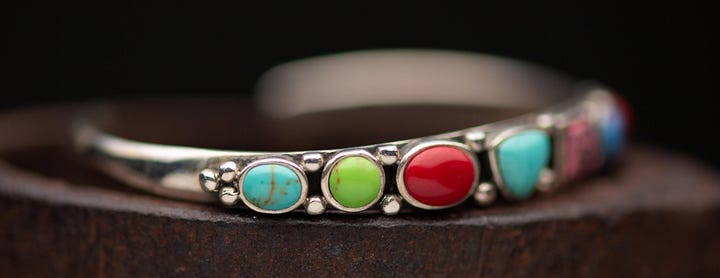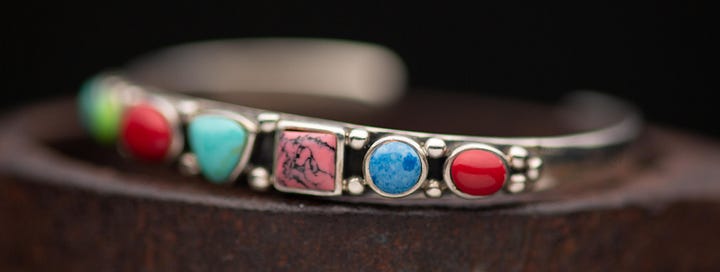Perhaps, I should add, in jewelry photography, as well.
So far, I have spent quite a bit of time trying to decide on what the scope of this posting should be. I wanted to build on my previous post and talk about what happens (for me and what I shoot) when I open up the aperture on my lens.
As I started to write, placing thoughts in, a hopefully, logical order, I thought about explaining the difference in Depth of Field and Depth of Focus. Both are important elements in the functioning of of any camera, but they are often confused with each other. In very general terms, Depth of Field, is concerned with what’s in front of the lens, and Depth of Focus, is all about what happens behind the lens. Here, I want to talk about Depth of Field (DOF), though I might need to refer to Depth of Focus (DOf) once or twice.
DOF, is used to describe how much of your photograph is in acceptably sharp focus. If I were to stand ten feet away from ten people, all standing in a line so that they are all the same distance from the camera, and I was shooting at an aperture of f/8, all of the faces would be in focus. More to the point, all of the faces would be within the DOF for the f/8 aperture.
If, however, I placed the ten people in a staggered formation - each person standing behind, and slightly to the side of, the person in front of them - so that the distance between the front person in line, and the last person was (say) 15 feet, using the same f/8 aperture, and I focused my lens on a person in the middle of the formation, the first person’s face would be out of focus, and the last person’s face would also be out of focus. How’s that for a run-on sentence?
The face of the person in the middle would be in sharp focus. The person directly in front and behind the middle person would also be in focus. Three people in the middle of this staggered formation would be in focus, but everyone in from of them (closer to the camera) and everyone behind them farther away from the camera), would be out of focus. That is at f/8. If I were to “close” the aperture to f/14, and did not change my point of focus, then I might have the faces of six people in focus. If I were to “open” the aperture to f/2, I might have just the face in the middle person in focus. Generally speaking, the higher your f-stop number, the tighter your aperture will be and the deeper your DOF will be. Got it?
All of this works well when you are some distance from your subject. It all goes out the window when you get really close to your subject, just like what happens when I shoot jewelry.
Take this shot, as an example….
When I shoot jewelry, I typically use my Zeiss 100mm Lens. It is my favorite lens for this type of shooting, because it renders texture better than any other lens that I have. Because I shoot with a piece of diffusion in-between my strobe and the bracelet (in addition to the diffusion from my softbox), I typically shoot in the 5.0-6.3 f-stop range. In this shot, I would suspect that I shot in f/5.6.
You can see that the center stone is nicely in focus, but because the bracelet forms an arc, that bends away from the camera, all of the other stones get progressively more out of focus, the farther away they get from the center of the picture. The farthest stones might as much as 10mm farther away from the front of the lens, but at this close distance, the DOF is razor thin.
If I were to back off three feet and use the same aperture setting, more than likely, all of the stones would be in sharp focus. The issue I would confront then would be a subject that was too small to see, too small in the frame. I must get close to the bracelet so that the bracelet can fill most of the frame. A rule of thumb here would be, the farther away you are from your subject, the deeper you DOF will be, the closer you are, the shallower your DOF will be, regardless of your aperture.
While a shallow DOF can be seen as artistic (and I am an Artiste! *chef’s kiss*), it fails to give the potential bidder the best idea of what the entire piece looks like, so I take detail shots, from several angles.


Is there a way around the challenge of shooting jewelry at close range, and having most of the piece be out of focus? Yes, it’s called focus-stacking, but that takes a LOT of time. I don’t currently have any shots that I have focus-stacked, but I think that I’ll look for an opportunity to do so, and report back.
Note: when you see a diamond ring in a jewelry advert in a magazine, most likely that ring was focus-stacked. There might be 40 pictures taken of that ring, with the point of focus changes by a fraction of a millimeter. You shoot 40 pictures ,stack them all together, and the entire ring will look to be in exactly sharp focus.
If, and when, I do a focus-stacked shot, that will bring in the concept of Depth of Focus, in addition to the Depth of Field that we have talked about here. I might even have a few handy diagrams as visual aides!



I want to throw in my vote for focus-stacking. First, you can limit your focal choices to 3 or 5 -- as you know, the fewer images to stack, the faster it goes. Try 3, then try 5. You certainly will NOT need 40. Stacking in LR is simple. You will add 5 minutes or less to your workflow for each stack of images. And with focus stacking, the middle-focus image from the bunch will give you the effect you are getting anyway. So you will have a choice of photos to use. While I love how your bracelet evolves in unfocused colors, the details of course fade toward the back. I see that as an artistic element. I would suspect that customers attending the auction may want to see less art, and more product. Give it a shot, as they say on turkey shoots.
A gorgeous shot, and no need for lengthy stacking. Win-win!